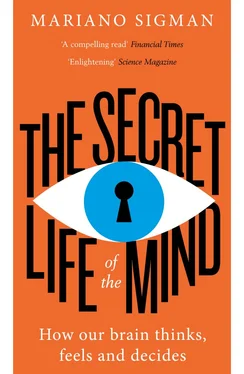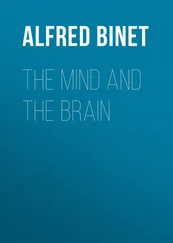In addition to being connected for concept formation, a newborn’s brain is also predisposed for language. That may sound odd. Is it predisposed for French, Japanese or Russian? Actually, the brain is predisposed for all languages because they all have – in the vast realm of sounds – many things in common. This was the linguist Noam Chomsky’s revolutionary idea.
All languages have similar structural properties. They are organized in an auditory hierarchy of phonemes that are grouped into words, which in turn are linked to form sentences. And these sentences are organized syntactically, with a property of recursion that gives the language its wide versatility and effectiveness. On this empirical premise, Chomsky proposed that language acquisition in infancy is limited and guided by the constitutional organization of the human brain. This is another argument against the notion of the tabula rasa : the brain has a very precise architecture that, among other things, makes it ideal for language. Chomsky’s argument has another advantage, since it explains why children can learn language so easily despite its being filled with very sophisticated and almost always implicit grammatical rules.
This idea has now been validated by many demonstrations. One of the most intriguing was presented by Jacques Mehler, who had French babies younger than five days old listen to a succession of various phrases spoken by different people, both male and female. The only thing common to all the phrases was that they were in Dutch. Every once in a while the phrases abruptly changed to Japanese. He was trying to see if that change would surprise a baby, which would show that babies are able to codify and recognize a language.
In this case, the way to measure their surprise wasn’t the persistence of their gaze but the intensity with which they sucked on their dummies. Mehler found that when the language changed, the babies sucked harder – like Maggie Simpson – indicating that they perceived that something relevant or different was occurring. The key is that this did not happen when he repeated the same experiment with the sound of all the phrases reversed, like a record played backwards. That means that the babies didn’t have the ability to recognize categories from just any sort of sound but rather they were specifically tuned to process languages.
We usually think that innate is the opposite of learned. Another way of looking at it is thinking of the innate as actually something learned in the slow cooker of human evolutionary history. Following this line of reasoning, since the human brain is already predisposed for language at birth, we should expect to find precursors of language in our evolutionary cousins.
This is precisely what Mehler’s group proved by showing that monkeys also have auditory sensibilities attuned to language. Just like babies, tamarin monkeys reacted with the same surprise every time the language they were hearing in the experiment changed. As with babies, this was specific to language, and did not happen when phrases were played backwards.
This was a spectacular revelation, not to mention a gift for the media … ‘Monkeys Speak Japanese’ is a prime example of how to destroy an important scientific finding with a lousy headline. What this experiment proves is that languages are built upon a sensitivity of the primate brain to certain combinations of sounds This in turn may explain in part why most of us learn to understand spoken language so easily at a very young age.
Our brains are prepared and predisposed for language from the day we are born. But this predisposition does not seem to materialize without social experience, without using it with other people. This conclusion comes from studies of feral children who grow up without any human contact. One of the most emblematic is Kaspar Hauser, magnificently portrayed in the eponymous film directed by Werner Herzog. Kaspar Hauser’s story of confinement for the duration of his childhood fn8shows that it is very difficult to acquire language when it has not been practised early in life. The ability to speak a language, to a large extent, is learned in a community. If a child grows up in complete isolation from others, his or her ability to learn a language is largely impaired. Herzog’s film is, in many ways, a portrait of that tragedy.
The brain’s predisposition for a universal language becomes fine-tuned by contact with others, acquiring new knowledge (grammatical rules, words, phonemes) or unlearning differences that are irrelevant to one’s mother tongue.
The specialization of language happens first with phonemes. For example, in Spanish there are five vowel sounds, while in French, depending on the dialect, there are up to seventeen (including four nasal vowel sounds). Non-French speakers often do not perceive the difference between some of these vowel sounds. For instance, native Spanish speakers typically do not distinguish the difference between the sounds of the French words cou (pronounced [ku]) and cul (pronounced [ky]) which may lead to some anatomical misunderstanding since cou means neck and cul means bum. Vowels that they perceive as [u] in both cases sound completely different for a French speaker, as much so as an ‘e’ and an ‘a’ for Spanish speakers. But the most interesting part is that all the children of the world, French or not, can recognize those differences during the first few months of life. At that point in our development we are able to detect differences that as adults would be impossible for us.
In effect, a baby has a universal brain that is able to distinguish phonological contrasts in every language. Over time, each brain develops its own phonological categories and barriers that depend on the specific use of its language. In order to understand that an ‘a’ pronounced by different people, in varying contexts, at different distances, with head colds and without, corresponds to the same ‘a’, one has to establish a category of sounds. Doing this means, unfailingly, losing resolution. Those borders for identifying phonemes in the space of sounds are established between six and nine months of life. And they depend, of course, on the language we hear during development. That is the age when our brain stops being universal.
After the early stage in which phonemes are established, it is time for words. Here there is a paradox that, on the face of it, seems hard to resolve. How can babies know which are the words in a language? The problem is not only how to learn the meaning of the thousands of words that make it up. When someone hears a phrase in German for the first time, not only do they not know what each word means but they can’t even distinguish them in the sound continuum of the phrase. That is due to the fact that in spoken language there are no pauses that are equal to the space between written words. Thatmeansthatlisteningtosomeonespeakisliketryingtoreadthis. fn9And if babies don’t know which are the words of a language, how can they recognize them in that big tangle?
One solution is talking to babies – as we do when speaking Motherese – slowly and with exaggerated enunciation. In Motherese there are pauses between words, which facilitates the baby’s heroic task of dividing a sentence into the words that make it up.
But this doesn’t explain per se how eight-month-olds already begin to form a vast repertoire of words, many of which they don’t even know how to define. In order to do this, the brain uses a principle similar to the one many sophisticated computers employ to detect patterns, known as statistical learning. The recipe is simple and identifies the frequency of transitions between syllables and function. Since the word hello is used frequently, every time the syllable ‘hel’ is heard, there is a high probability that it will be followed by the syllable ‘lo.’ Of course, these are just probabilities, since sometimes the word will be helmet or hellraiser , but a child discovers, through an intense calculation of these transitions, that the syllable ‘hel’ has a relatively small number of frequent successors. And so, by forming bridges between the most frequent transitions, the child can amalgamate syllables and discover words. This way of learning, obviously not a conscious one, is similar to what smart phones use to complete words with the extension they find most probable and feasible; as we know, they don’t always get it right.
Читать дальше












